I will introduce the charm of Japanese mountains. In this article, as a Japanese person who has been pursuing the fascination of mountain climbing for 15 years, I will introduce some of the most wonderful mountains in Japan.
First of all, you will be captivated by the diverse landscapes of Japanese mountains. Mountains scattered across the country offer varying scenery depending on the region and season, and this diversity is one of the charms of Japanese mountains. The beautiful landscapes in every season enchant those who visit.
Japan itself was formed as a result of geological activity, and as a result, Japan is known for its many active volcanoes. While these mountains may pose the potential for disasters, they also bring benefits like hot springs, allowing you to experience the wonders of Japan’s nature.
Furthermore, Japan is covered in mountains and forests, with mountains occupying about three-quarters of the country’s land. The archipelago stretches from Hokkaido to Kyushu, and you can enjoy the distinctiveness of mountains due to differences in weather conditions. Variations between the Pacific and Japan Sea sides, as well as north and south, diversify the landscapes of each mountain.
Through this article, I hope people can feel the charm of Japanese mountains and have the opportunity to experience the beauty and mystery of nature. Japanese mountains stimulate the spirit of adventure and enrich the soul.
Mount Fuji
Mount Fuji, with its grandeur and the allure of mountain climbing, has captivated countless outdoor enthusiasts. In this article, we will introduce the highlights of climbing Mount Fuji, its natural beauty, and the unparalleled views it offers.
First, let’s explore the climbing routes. Mount Fuji boasts four climbing routes: Fujiyoshida, Subashiri, Gotemba, and Fujinomiya, each with its unique characteristics. Choose a route that matches your physical condition, and the estimated climbing time typically ranges from about 5 to 7 hours and 30 minutes. To savor the magnificent vistas and breathtaking spots, ensure you maintain a sustainable pace during your ascent. If considering staying at a mountain hut, don’t forget to make advance reservations.
The allure of Mount Fuji extends to its stunning natural surroundings. Places like the White Thread Waterfall, the Fuji Five Lakes, and Oshino Hakkai, registered as the components of Mount Fuji as a World Heritage site, showcase the abundant natural beauty. However, as the altitude of Mount Fuji increases, the vegetation becomes sparse, with the area around 2,500 meters above sea level marking the tree line.
Upon reaching the summit of Mount Fuji, you’ll be treated to a view unlike any other in Japan. You can gaze over the Southern Alps, the Izu Peninsula, Lake Kawaguchi, the mountains of Okutama, and more. The moment you witness the sunrise, especially with the first light breaking through the sea of clouds, it’s a profoundly moving experience that can erase the fatigue of your climb. Don’t miss unique attractions like the silhouette of Mount Fuji, known as “Kage-Fuji.”
Mount Fuji, with its breathtaking beauty, continues to inspire visitors from all around the world. Recognized as a World Heritage site, it invites you to experience its charms fully. Why not pay a visit and relish the unparalleled views from the summit of Mount Fuji and embrace the true essence of mountain climbing, all while connecting with nature?
Yarigatake
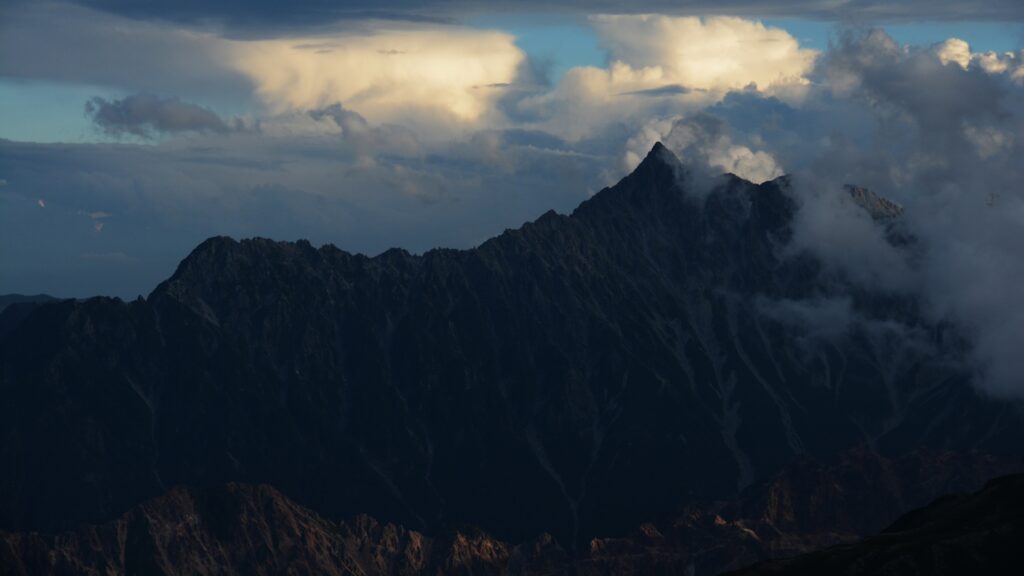
Yarigatake, the fifth tallest mountain in Japan with an elevation of 3,180 meters, is a beloved representative of Nagano Prefecture, located in the southern part of the Hida Mountain Range. It is not only one of Japan’s 100 famous mountains but also renowned as one of the “Hundred Mountains of Flowers.”
The mountain’s distinctive peak, which seems to pierce the sky like a spear, has earned it the nickname “Japan’s Matterhorn.” In the world of Japan’s 100 famous mountains, Yarigatake is often compared to Mount Fuji, as it is considered one of the two most iconic mountain types in the country. This reputation makes Yarigatake a dream destination for climbers and one of the most captivating mountains in Japan.
With an elevation of 3,180 meters, Yarigatake stands out in the Northern Alps, thanks to its sharp and pointed peak known as “Hosaki.” From this summit, climbers can enjoy panoramic views of the Hodaka mountain range, Kasagatake, Jomon Ridge, and even Mount Fuji, among over 30 of Japan’s 100 famous mountains.
Yarigatake’s rugged appearance is the result of a geological history marked by the rise of a massive caldera and the erosive forces of glaciers. The famous vantage point known as Tengu-dake Kar (also called the Glacier Park) and the steep needle-like formations on the summit are nothing short of awe-inspiring.
Reaching the summit of Yarigatake typically takes several days. Climbers often utilize mountain huts and campsites along the way, as a single-day ascent can be challenging. During the autumn foliage season, the mountain can become quite crowded, so planning your ascent with ample time is advisable. Additionally, climbers should monitor their physical condition closely.
In unfavorable weather, the summit of Hosaki may be obscured, but on clear days, it’s possible to glimpse Mount Fuji even without reaching the top. The view from the mountain huts is also splendid, allowing visitors to savor a variety of Yarigatake’s landscapes.
Yarigatake offers a unique experience with the changing beauty of each season. The mountain is adorned with a variety of alpine flora during the summer months, with the best viewing period spanning from the melting of the July snow to the end of August. The ideal time to attempt Yarigatake is considered to be from August to September, as the arrival of winter can quickly deteriorate visibility.
In conclusion, Yarigatake, with its grandeur and the natural beauty it offers throughout the seasons, promises a memorable experience for climbers who are captivated by its charm.
Kitadake
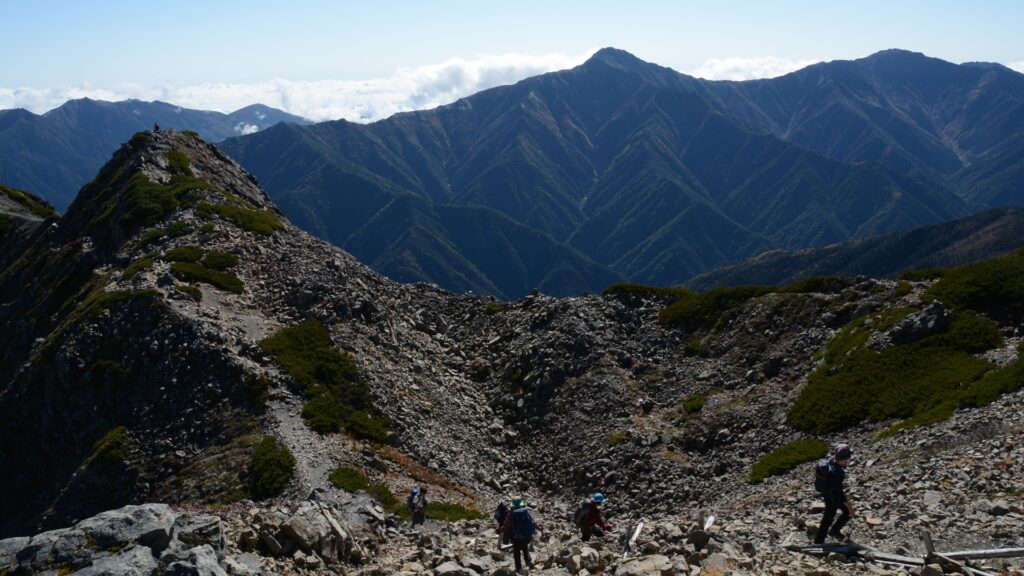
North Peak, with an elevation of 3,192 meters, is Japan’s second-highest mountain, following only Mount Fuji. Its beauty and allure are truly indescribable. Part of the White Peak Triad, which also includes Middle White Peak, Gap Peak, West Noko Tori Peak, and Noko Tori Peak, North Peak stretches across the northern region of the Southern Alps.
Designated as one of “Japan’s 100 Famous Mountains” and part of the “Yamanashi 100 Famous Mountains,” North Peak’s hiking trails are graced with vibrant alpine flower meadows. Among them, the “Kitadake-sou” that blooms shortly after the snow melts is a unique species found exclusively on North Peak. It reaches its peak bloom from mid to late June, requiring a certain level of mountaineering skills and caution to witness its beauty due to lingering snow.
Referred to as the “White Peak Triad (Shirane Triad),” including Gap Peak and Noko Tori Peak, these three mountains are often hiked together, forming a beloved route for many mountaineers. The breathtaking panoramic views from the summit, with its imposing cliffs and lingering snowfields even in the summer, promise a memorable experience.
The eastern slope of North Peak features the formidable “Batress,” a colossal cliff with an astounding vertical drop of approximately 600 meters. This area is a sacred ground for rock climbers, drawing numerous adventurers during the summer months. With various named rock ridges, such as the Northeastern Ridge and the 1st to 5th Ridges, exploration becomes a delightful journey.
The snow-free season on North Peak typically spans from mid-July to early October. In September, the mountain starts to showcase the vibrant colors of autumn as the leaves change. However, by early November, significant snowfall begins, leading to the closure of the South Alps Forest Road gate. Planning ahead is crucial due to this change in conditions.
North Peak offers an opportunity to fully immerse in the charm of the Southern Alps, providing a haven for those seeking the beauty of nature and the joys of outdoor adventure. It is undoubtedly a destination worth exploring.
Hotakadake
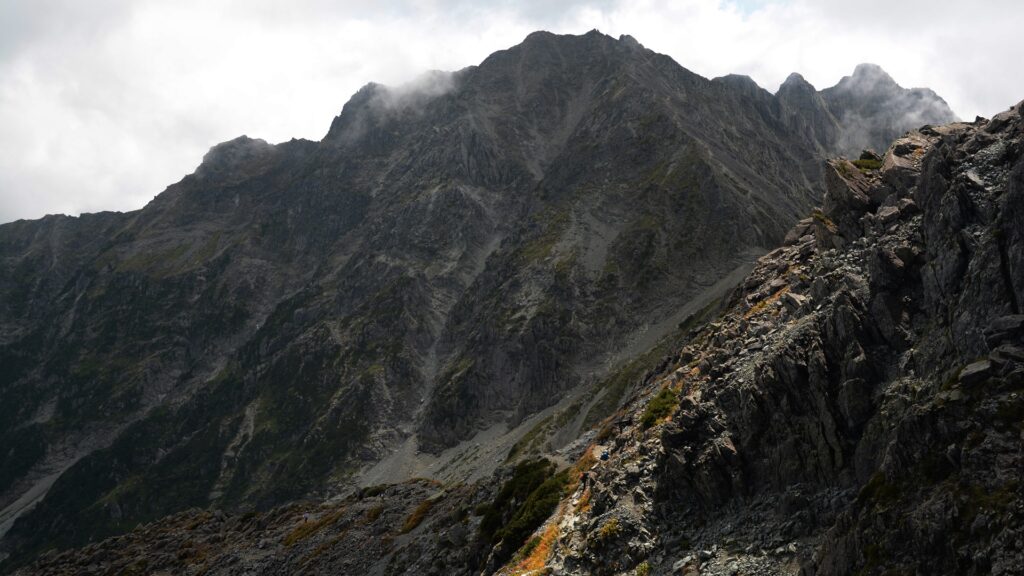
The mountainous area that spreads across the southern part of the Hotaka Mountain Range, commonly known as the Northern Alps, captivates many climbers and tourists with its magnificent beauty. It comprises various peaks, including Oku-Hotakadake (elevation 3,190 meters), Kasaodake (3,110 meters), Kitahotakadake (3,106 meters), Maehotakadake (3,090 meters), and Nishihotakadake (2,909 meters).
The Hotaka Mountain Range straddles the border between Nagano and Gifu prefectures, offering routes to places like Kamikochi and Shin-Hotaka Onsen. This area features challenging climbing routes and traverse paths, showcasing impressive steep rock ridges, grand panoramas, and breathtaking views from the Karasawa Cirque, all of which ignite the adventurous spirit of many.
The most significant allure of the Hotaka Mountain Range is the towering rock walls that command an overwhelming scale. Despite the need for physical fitness and technical skills on routes such as the Oku-Hotaka-Kiretto and Jandārumu, many climbers are drawn to the charm of these rock ridges. After reaching the summit, you are sure to experience a moment enveloped in a sense of personal growth and satisfaction.
Another attraction is the natural beauty that unfolds throughout the seasons. Spring brings late snowmelt and budding greenery, summer offers billowing clouds and the beauty of alpine plants, autumn presents clear skies, vibrant foliage, and the allure of sea of clouds, while winter allows you to enjoy the world of snow and ice, combining harshness and beauty. Throughout the year, the Hotaka Mountain Range is brimming with beauty.
Don’t miss the various flowers that bloom in the Hotaka Mountain Range throughout the seasons. Species like Rhododendron brachycarpum, Rhododendron degronianum, Tanakaea radicans, Mitella nuda, Trollius japonicus var. albiflorus, Corydalis tenuis, Iris gracilipes, Papaver miyabei var. miyabei, Miyama Butterbur, Miyama Goldenray, Pulsatilla cernua, Lilium rubellum, Saxifraga stolonifera, Primula modesta, Primula kisoana, and Dicentra peregrina delight visiting climbers.
The journey to Hotakadake typically takes about 9 hours on foot from Kamikochi to the Hotakadake Mountain Hut (via Karasawa and the Zaitengrat route). It’s common to spend a night along the way, and the process of walking through the forest zone and crossing the treeline into the rocky ridge zone is an integral part of this captivating adventure.
The grand landscapes, challenging climbing routes, and the beauty of the changing seasons in the Hotaka Mountain Range seize the hearts of many. In this place, often called the jewel of the Northern Alps, why not embark on a new adventure?
Yatsugatake
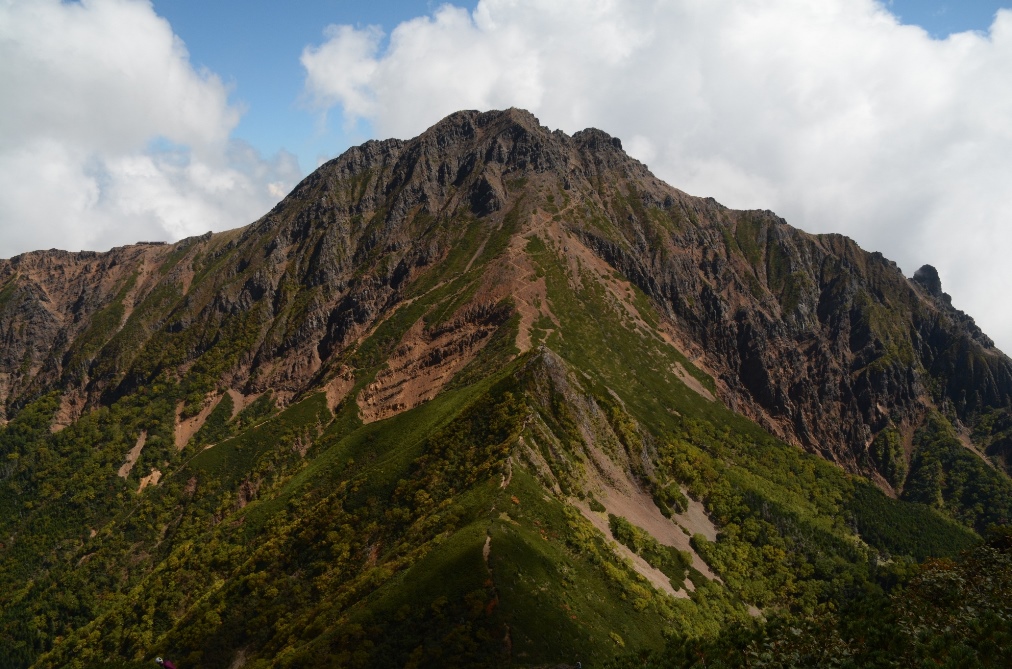
Mount Yatsugatake is a place of undeniable beauty and diverse charm that will captivate you. To begin with, its birth is steeped in mystical tales. Formed by volcanic activity, this mountain is divided into North Yatsugatake and South Yatsugatake, with various origins attributed to its name. Generally, it is said to consist of eight primary peaks, with notable summits including Akadake, Tengudake, Yokodake, Ioudake, Amidadake, Hengaku-san, Gongendake, and Nishiyama.
North Yatsugatake is surrounded by lush primeval forests and high-altitude lakes. One of Japan’s largest high-altitude lakes, Shirakomaike, situated at an altitude of over 2,000 meters, creates a mystical landscape with moss-covered ground and coniferous primeval forests. Near Tengudake, you can find the enigmatic Shirabachi Pond, known to dry up seasonally.
In Yatsugatake’s foothills, subalpine zone, and alpine zone, a diverse array of flora thrives, with the alpine zone boasting a wealth of rare high-altitude plants. The black lily, moss campion, and alpine cinquefoil are just a few examples of the beautiful blooms that adorn the landscape.
Mount Yatsugatake’s central location in Japan attracts a wide range of animals from both the north and south. It’s not uncommon to encounter unusual species like Japanese serow, marten, Japanese serow, mountain hare, and more. Abundant birdlife can also be observed.
The mountain is also steeped in faith and folklore. Over the ages, stories revolving around Mount Yatsugatake have been passed down in the Suwa Basin. Among them, a myth stands out where Mount Yatsugatake and Mount Fuji engaged in a legendary showdown to determine their heights, with Mount Yatsugatake triumphing. This tale continues to be told among the locals and instills a sense of reverence and familiarity with nature.
Mount Yatsugatake harmonizes nature and history, offering enchanting experiences and moments of wonder to those who visit. Why not step foot on this mountain and explore its allure?
Kaikomagatake

Kai-Komagatake, standing at an elevation of 2,967 meters, is a majestic peak located at the northern end of the Japanese Alps in the Akadake mountain range. For mountaineering enthusiasts and nature lovers, this mountain is a treasure trove of captivating experiences.
Kai-Komagatake has received high praise from the likes of Kyuya Fukada, who declared, “If asked to name the most representative pyramid in the Japanese Alps, I would undoubtedly choose Komagatake,” and further exclaimed, “Even if you were to ask me which summit is the most beautiful in the Japanese Alps, I would still choose Kai-Komagatake.” His words underscore the mountain’s overwhelming beauty and significance.
The dynamic granite formations at the mountain’s summit inspire the spirits of climbers and allow them to truly appreciate the grandeur of nature. The pyramid-like shape of Kai-Komagatake has made it an object of reverence for centuries, standing alongside Mount Fuji as a sacred peak.
While many mountains in Japan bear the name “Komagatake,” Kai-Komagatake has a unique origin story. Legend has it that this name was bestowed upon it because it was the birthplace of the sacred horse “Amanotahayahokoma,” presented to Prince Shotoku.
In addition, during the Edo period, a mountain of faith was established here by a Shinshu native named Gonsaburo, who later became known as Kouban Gyoja and founded the Iiryoku Fudo Son. Kai-Komagatake Shrine, surrounded by ancient sacred trees, hosts lively Kagura performances every spring, drawing worshippers to partake in the festivities.
The devotees of Kai-Komagatake Shrine and those who revere this sacred mountain are collectively known as “Komagatake-kou.” These individuals embark on pilgrimages to the shrine, engage in mountain ascents, and undertake spiritual practices. Everywhere along the trails leading up Kai-Komagatake, one can find stone monuments and spiritual markers that reveal the fervent devotion of bygone eras.
Kai-Komagatake, with its magnificent mountain profile, natural beauty, and historical significance, holds a special place in the hearts of Japan’s mountaineering enthusiasts. Visiting this mountain provides a unique opportunity to witness the marvels of nature and the wisdom of history in one breathtaking journey. Why not climb Kai-Komagatake and experience its allure for yourself?
Shiroumadake
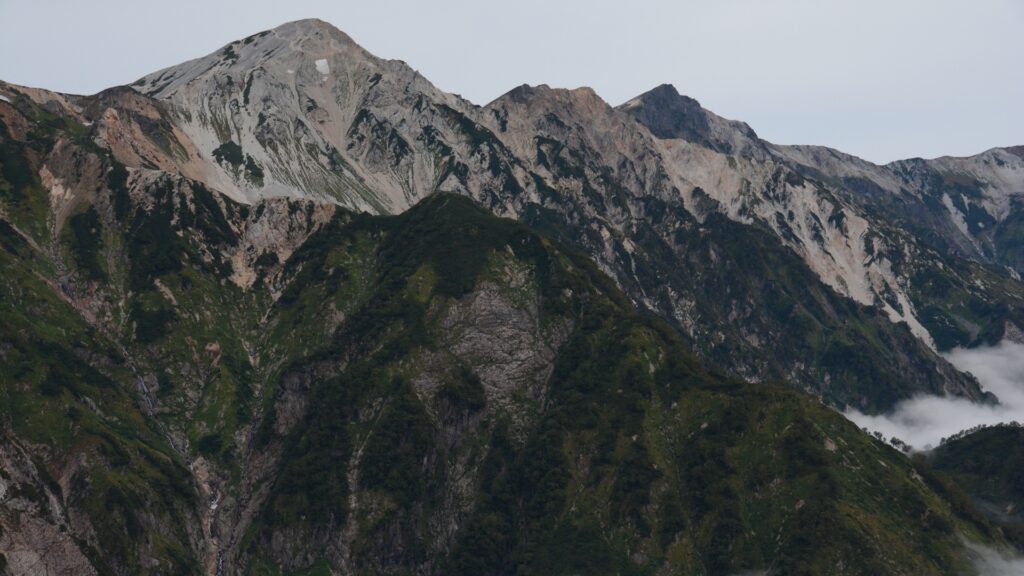
Shiroumadake, a gem of mountains skillfully woven with the charm of the Northern Alps. Its magnificent appearance and diverse attractions make it a dream destination for mountaineers.
This mountain proudly stands alongside Yarigatake in the northern part of the Hida Mountains, also known as the Northern Alps. With an elevation of 2,932 meters, it spans three prefectures: Nagano, Toyama, and Niigata. Shiroumadake, along with Shirouma Yarigatake and Shirodake, is collectively referred to as the “Three White Horse Mountains” and is beloved by both locals and visiting mountaineers.
Moreover, Shiroumadake is renowned as a “Mountain of Flowers,” where a multitude of colorful flowers bloom from spring to summer, attracting many climbers to its charming location known as the “Flower Fields.” Various alpine plants such as Miyamakinpouge, Shinanokinbai, Miyamaodamaki, and Hakusanichige delight the heart of nature enthusiasts.
The panoramic views from the summit are breathtaking, offering a sight of numerous mountains, including the Northern Alps, Southern Alps, and the Yatsugatake Range. In addition to the pleasure of alpine plants, the grandeur of nature’s beauty will undoubtedly leave mountaineers in awe.
Shiroumadake is also known for the “Ooyukigata” (Great Snow Field), which is Japan’s largest perennial snowfield. This snowfield is a popular trekking route and a coveted goal for many mountaineers. However, due to its high level of difficulty, it is strongly recommended for beginners to undertake this challenge with experienced climbers.
The Ooyukigata of Shiroumadake is one of Japan’s three largest snowfields, captivating many climbers with its grandeur and beauty. Shiroumadake, with its beauty and diverse attractions, provides mountaineers with everlasting memories.
Tsurugidake

Located within the northern part of the Northern Alps and the Tateyama mountain range, Mt. Tsurugi is renowned for its rugged beauty, often referred to as the “Sanctuary of Rock and Snow.” Its towering rocky peaks near the summit give the impression of a row of swords, and it has captivated mountaineers for generations.
Standing at an elevation of 2,999 meters, Mt. Tsurugi straddles the municipalities of Kamiichi and Tateyama in Toyama Prefecture. It is situated within the Chubu Sangaku National Park and is designated as a special protection area. Notably, it is one of the few mountains in Japan that still houses glaciers, adding to its natural splendor.
While considered one of the most challenging mountains for general hikers, the presence of well-maintained chains and ladders on the rocky sections makes it accessible for experienced climbers with a history of scaling rock faces. However, there are sections along the route with potential slip and fall hazards, making it advisable to hire a mountain guide for safety.
Particularly, the chain sections that traverse beyond Mt. Tsurugi are challenging and are often considered an advanced climber’s playground. With a total of 13 chain sections, the most difficult is known as “Kani no Tatebai Yokobai.” Additionally, the most accident-prone section is found beyond Mt. Ichifu and Mt. Maetake, between the gateway to Mt. Maetake and the summit. Here, one must be cautious of loose stones, slipping, and falling rocks.
Nevertheless, surmounting these obstacles to reach the summit of Mt. Tsurugi is a moment of unparalleled achievement. Although the summit area is not particularly spacious, it rewards climbers with breathtaking 360-degree panoramic views. On clear days, you can gaze upon the Tateyama Sanzan, iconic peaks in the Northern Alps, and even glimpse the Japan Sea and, on occasion, the distant Mt. Fuji.
Mt. Tsurugi offers climbers an unforgettable adventure, combining challenging routes with the grandeur of nature. Conquering this majestic mountain presents a prime opportunity to experience the true allure of mountaineering.
Tanigawadake
Mount Tanigawa, located on the border of Gunma and Niigata prefectures, is a mountain that promises an unforgettable experience. Boasting the twin peaks of “Tomano Ear (1,963m)” and “Okino Ear (1,977m),” it offers routes suitable for both beginners and advanced climbers.
The allure of this mountain lies in the majestic panorama created by overlapping mountain ridges, the gradient of near and far, and the vibrant colors of nature. Many mountaineering enthusiasts find themselves uttering in astonishment, “It’s hard to believe we’re only at 2,000 meters…”
The arrival of summer brings an opportunity to enjoy the blooming alpine flora, a true delight on Mount Tanigawa. Due to its relatively low tree line, it’s easy to revel in the beauty of alpine flowers such as Edelweiss, Saxifraga stolonifera, and Gentiana thunbergii, enhancing the joy of climbing.
The most popular time to visit Mount Tanigawa is from September to October when the weather is mild, and the autumn foliage is at its peak. Late autumn offers a rare spectacle of snow and vibrant foliage, which you can experience while ascending on the ropeway. Weekends can get quite crowded, so prepare for a determined effort.
Climbing in the snow is an experience like no other, and Mount Tanigawa is an excellent place for beginners to try their hand at winter mountaineering. Its moderate difficulty level and the sense of achievement when you reach the summit keep many coming back. It’s during the harsh winter that you can truly appreciate the pristine landscapes.
Mount Tanigawa is not just about climbing; it offers a range of outdoor activities. For instance, the rocky terrain of “Ichinokurasawa” makes it a mecca for rock climbing, attracting climbers from around the world.
After your mountain adventure, indulging in the local hot springs is a must. The vicinity of Mount Tanigawa is dotted with numerous hot springs, all of which offer a blend of breathtaking views and soothing hot baths. Choosing the right hot spring can be another enjoyable part of your journey. With its grandeur and diverse attractions, Mount Tanigawa captivates the hearts of mountain enthusiasts. Why not visit and let its magic work on you?
Kisokomagatake
Komagatake in Kiso: Unveiling the Hidden Charms of the Central Alps
Komagatake, the highest peak in the Central Alps, is known by two different names. In the Ina Valley, it is referred to as West Komagatake and East Komagatake to distinguish it from Kai Komagatake, while people in the Kiso Valley commonly call it Kiso Komagatake. The name of the mountain is derived from the snow patterns resembling horses that appear on its slopes in late spring, much like other mountains with the name “Komagatake” across Japan.
This mountain has been a sacred site for mountain worship for centuries, with historical records indicating that a shrine, Komagatake Shrine, was established on the summit in the year 1532 by a man named Tokuhara Haruyasu in the town of Kiso-Uematsu. In the modern era, it gained recognition among mountaineers when W. Weston and his friends made an ascent from the Uematsu route in August 1891, documenting their journey in a book.
The region around the summit of Kiso Komagatake is blanketed by vibrant green dwarf pine, creating a striking contrast with the white granite sands. To the west, you can see Kiso Maedake, to the south lies Chudake, and further east stands Ina Maedake. Hikers are spoilt for choice with numerous trails converging on this mountain. Though just shy of the 3,000-meter mark, the panoramic views from the summit are breathtaking. Positioned centrally in the Japanese Alps, you can enjoy views of the Northern Alps, Norikura-dake, the prominent Myojin-yama, and a panoramic vista of the Southern Alps, separated by the Ina Valley.
The ridge and the area around the mountain lakes offer a rich display of alpine flora, including flowers such as Iwau-me, Iwagikyou, Aonotsugazakura, and Takaneshiogama, among others. Particularly, the Komauusuyukisou, a special species found only in this region of the Central Alps, is closely related to the Edelweiss family, making it a unique treasure on these slopes.
While there are various routes to ascend Kiso Komagatake, the most convenient one, especially for beginners, starts at Senjoshiki and ascends via Jonokoshi Jodo, Chudake, and finally the summit (approximately 1 hour and 30 minutes from Senjoshiki). For a more classic and serene experience, there’s the Katsura-Koba route, also known as the setting for Shin Tadao’s novel “The Monument of the Priest.” This path takes you over Shogashirayama and onwards to the summit, allowing you to enjoy the distinctive mood of the Central Alps (approximately 6 hours and 30 minutes from Katsura-Koba).
From the Ina side, you can take routes like the Kitagotosho trail (just under 7 hours) or the Miyata Plateau route, passing through Ise Falls to reach the summit (just under 7 hours). On the Kiso side, the Kiso Fukushima trail (just under 7 hours) and the most commonly used Uematsu route (just under 7 hours) offer access to the peak. Regardless of the route chosen, hikers will have the opportunity to explore the two different facets of Kiso Komagatake from the Ina and Kiso Valleys, making this mountain a treasure trove of the Central Alps.
For hiking enthusiasts, Kiso Komagatake remains an undiscovered gem in the heart of the Central Alps. Its stunning vistas and diverse flora make it a worthwhile destination for adventurers seeking the beauty and wonder of the natural world.
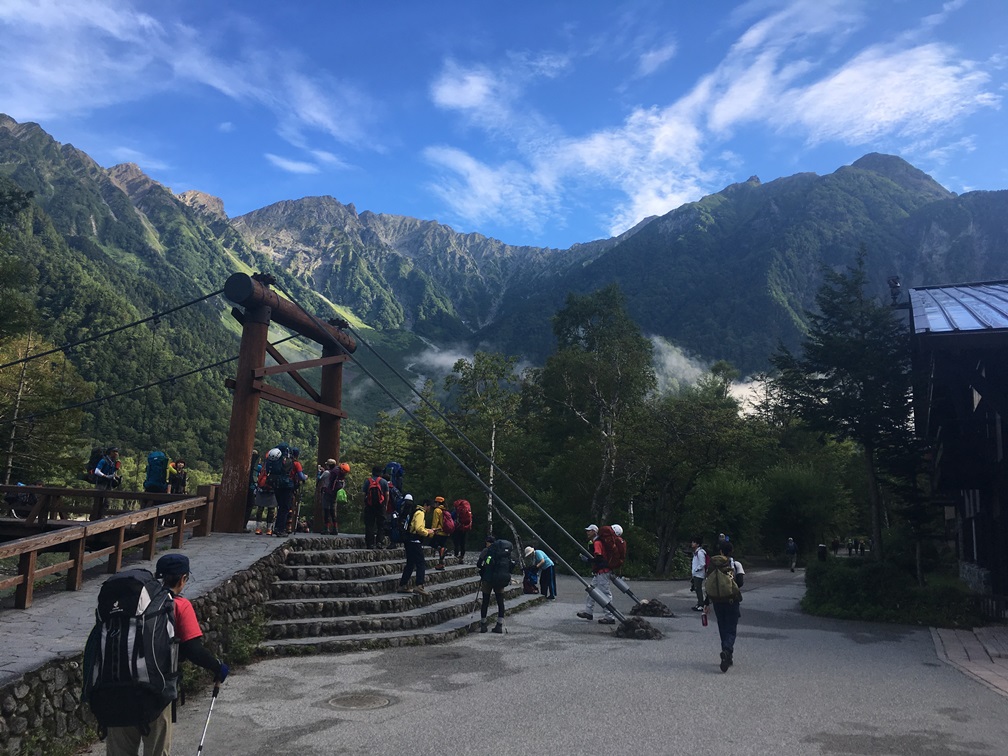

コメント